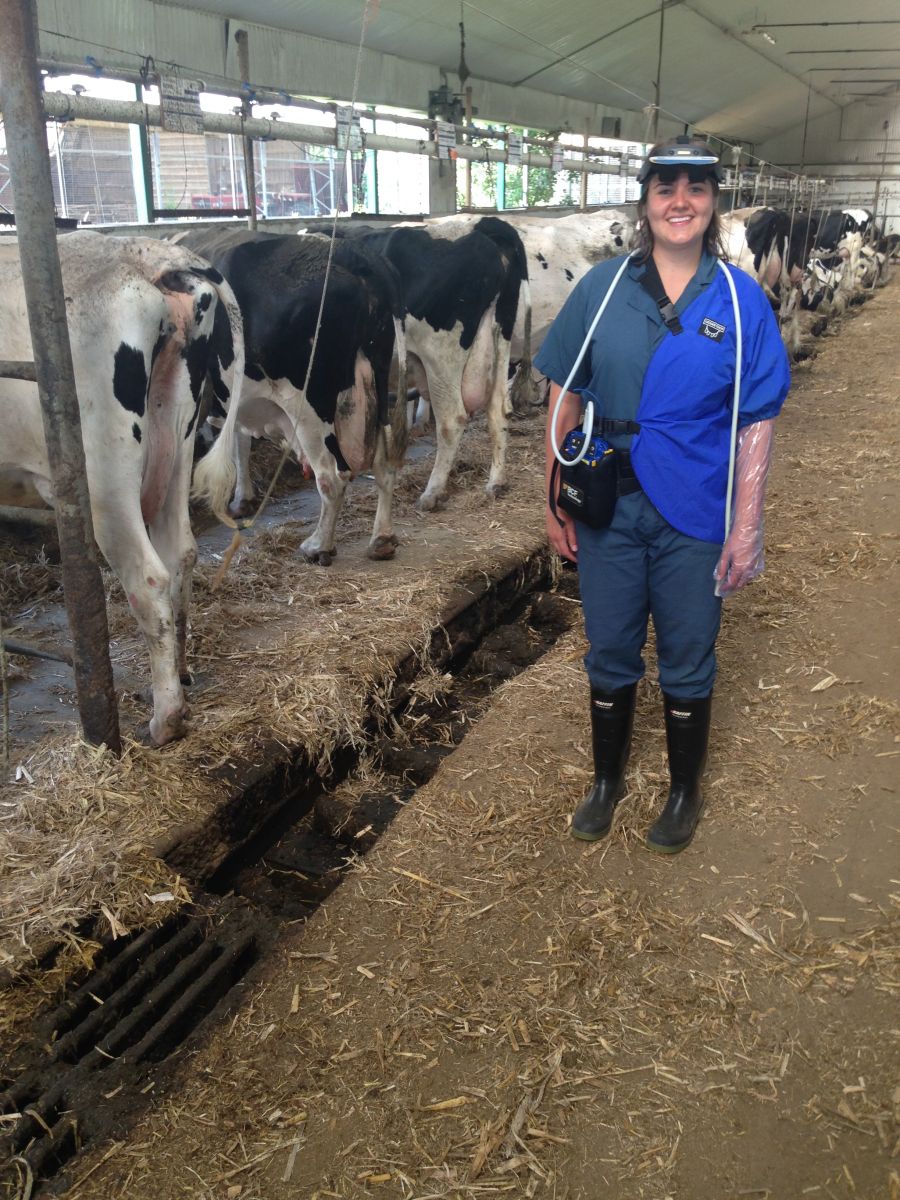I can’t believe that it’s July and I’m already through one week of my externship at Prescott Animal Hospital. It’s been a busy week and I’m learning so much! I have been spending my time on the road with the large animal vets, mainly treating horses and dairy cows (with a few alpacas, goats and Highland calves in the mix).
One new skill that I have been working on this week is bovine reproductive ultrasound in dairy cows. I have been fortunate enough to have my very own ultrasound machine through the student loan program at BCF Technology. For any vet students who may be reading this, I highly recommend submitting your application when you are on your externship or rotations!
L et’s take a step back for a second – some of you may be wondering why we do reproductive ultrasounds on dairy cows. Well, a dairy cow’s job is to produce milk and, just like any other mammal, she needs to have a baby in order to start her lactation. When a cow starts her lactation, the vet is involved along the way to make sure that she is in top reproductive health and on schedule to have another calf in one year.
et’s take a step back for a second – some of you may be wondering why we do reproductive ultrasounds on dairy cows. Well, a dairy cow’s job is to produce milk and, just like any other mammal, she needs to have a baby in order to start her lactation. When a cow starts her lactation, the vet is involved along the way to make sure that she is in top reproductive health and on schedule to have another calf in one year.
One great tool that we have as veterinarians is ultrasound because it allows us to view a cow’s reproductive tract in a minimally invasive and very accurate way. The ultrasound probe is guided by hand in the cow’s rectum in order to visualize the ovaries and the uterus. Based on the structures that are present, the veterinarian is able to give a diagnosis of pregnancy or advise the farmer on where the cow is in her cycle and what steps to take to increase her chances of getting pregnant.
My experience with performing ultrasounds this past week was awkward at first but with patience and practice, I’m starting figure out what works for me. I’m starting to train my brain to pick out the important things on my blotchy grey screen and my hand to navigate the structures. This is a skill that I will be using for the rest of my career but it’s still a work in progress.
For those of you who are interested in seeing what the vet sees during an ultrasound, check out these videos in the links below.
Non-pregnant cow
Pregnant cow -https://www.youtube.com/watch?v=tnx8xIPY5Q&list=PL0DC706424911FB4B&index=69